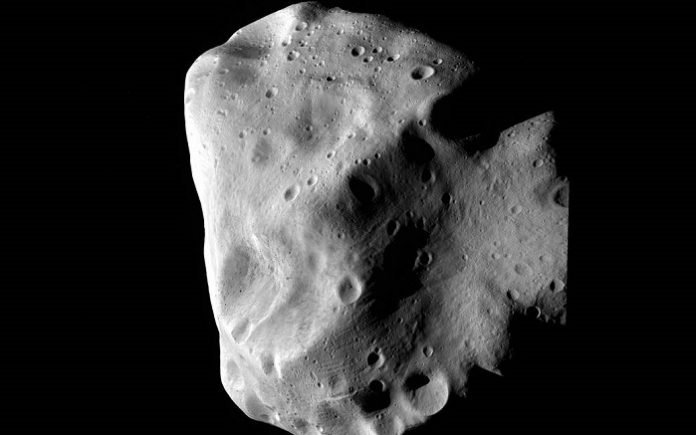
In a new study, researchers found incoming asteroids may be harder to break than scientists previously thought.
The research was conducted by researchers from Johns Hopkins University.
Previously, scientists thought that the larger the asteroids, the more easily it would break.
This is because bigger asteroids are more likely to have flaws.
Previous research has examined the physical materials like rocks at a laboratory scale.
However, it is harder to translate this understanding to asteroids that are as big as cities.
A previously developed computer model showed that when an asteroid about a kilometer in diameter striking into a 25-kilometer diameter target asteroid at an impact velocity of five kilometers per second, the big asteroid could be destroyed by the impact.
In the current study, the team combined a new computer modeling with a novel understanding of rock fracture to simulate asteroid collisions.
The new computer modeling is called Tonge-Ramesh model.
It considered various factors such as mass, temperature, and material brittleness of asteroids. It also included smaller details in an asteroid collision, such as the limited speed of cracks in the asteroids.
The simulation showed two phases. In the first phase, the processes begin immediately after an asteroid is hit, and it only lasts fractions of a second.
In the second phase, the pieces fly off the asteroid’s surface after the impact, and gravitational reaccumulation occurs over many hours after the impact.
The team found in the first phase, millions of cracks formed and rippled throughout the asteroid, and a crater was created. However, the entire asteroid is not broken by the impact.
In the second phase, the impacted asteroid retained strong strength because it had not damaged completely.
The results suggest asteroids are stronger than scientists previously thought. They require more energy to be completely broken.
The findings may help develop asteroid impact and deflection strategies. The results may also improve the understanding of solar system formation.
The team hopes their finding could be useful for protecting the Earth from incoming asteroids.
For example, if an asteroid is coming at earth, is it better to break it into small pieces, or nudge it to go a different direction? And how much force is needed?
Future work is needed to answer these questions.
The lead author of the study is Charles El Mir, a recent Ph.D. graduate from the Johns Hopkins University’s Department of Mechanical Engineering.
The study is published in Icarus.
Copyright © 2019 Knowridge Science Report. All rights reserved.



